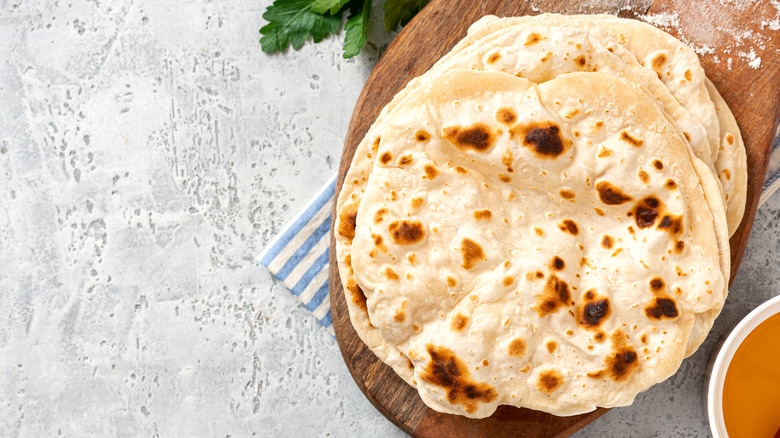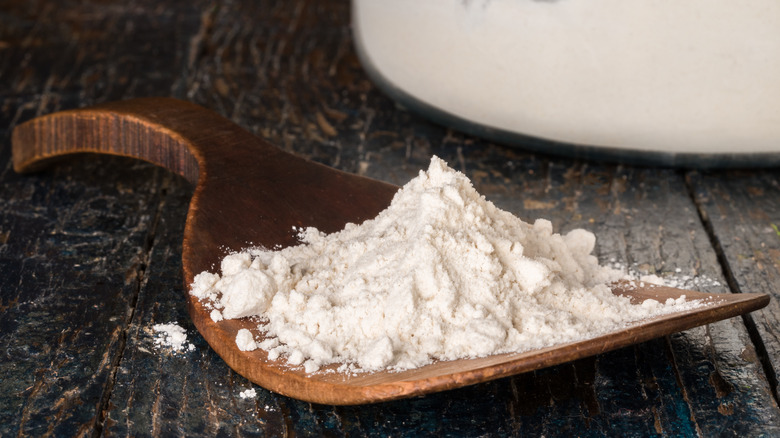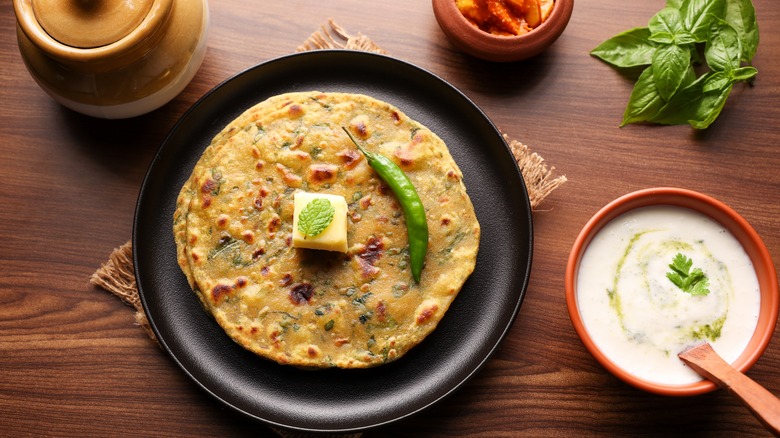The Special Stone-Ground Flour You Need For Roti
If you've ever thought about making your own roti at home to go with dal or another Indian dish, the good news is that you won't need many ingredients: Water and flour are the big ones, and some cooks may also add salt or oil. The bad news, however, is that you'll need a specific type of flour that won't generally be sold in standard American supermarkets — most likely you'll need to detour to an Indian grocery store to pick it up.
That flour is called atta. While the Hindi word "atta" also refers to flour in a more general sense, it's also generally understood as a type of whole wheat flour that's used to make roti. Atta is a particularly finely ground flour due to the heavy stones that are typically used to mill it. The intensity of that stone grinding also damages the starch in the wheat more than it does with standard Western flour. The idea of "damaged starch" isn't actually bad: All flours have some degree of this, but a higher level of starch damage means the flour will yield a denser final product. This is good for making flatbread like roti, but not so much for a fluffier American bread. There's also some difference in the type of wheat used for atta as compared to what's used for American flours: Atta is made with a "harder" wheat than is standard in U.S. bread flour — it has more gluten and as a result is stretchier.
Can you substitute regular flour for atta?
Atta may not always be convenient to get your hands on (and in 2023, some Indian communities in the U.S. even reported a shortage of it). If that's your situation, it's possible to make roti with regular supermarket bread, although you won't get a perfectly identical result. White whole wheat flour is a better substitute, since it's made with a relatively hard type of wheat, so it's higher in gluten for a stretchy dough that lends itself well to roti. It's also finely ground, making it more similar to atta.
Another good option is to mix that white whole wheat flour with all-purpose flour (a half-half mix is fine). This will result in a pretty close flavor profile to atta, which has a slightly nutty taste. Using only whole wheat may make for a more intense flavor than atta, due to its heavier nuttiness — mixing in the all-purpose flour cuts that to some degree. The texture will likely vary a bit, with the bread turning out a bit denser than if you use atta.
Other uses for atta
Atta isn't just for roti — it's also commonly used to make chapati, another Indian flatbread. It's pretty similar to roti, but the end product tends to be brushed with oil or some kind of fat and finished on a griddle; roti is kept pretty plain and oil-free. Atta is also used for paratha. Paratha is another flatbread but more complex than roti and chapati — it's flaky and layered (because it's typically rolled flat, folded, and rolled again repeatedly). It's layered with ghee (clarified butter) inside, and fried, not baked, and often stuffed with vegetables in its final form. It also appears in different parts of India: Paratha is more common in the south and roti in the north. And while it's decidedly not part of Indian cuisine, some home cooks have suggested that atta works well for a nice, dense banana bread, too.
There's one key Indian bread that you won't use atta for: Naan. Naan bread is made with maida, which is more or less regular, all-purpose flour. It's leavened and notably fluffier (thanks in part to the different flour) than its flatter counterparts like roti.


